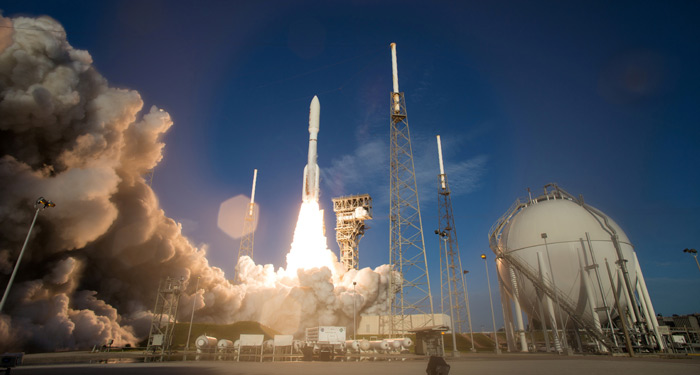
| 双语新闻 Bilingual News | 双语对照阅读 分级系列阅读 智能辅助阅读 在线英语学习 |

| 双语新闻 Bilingual News | 双语对照阅读 分级系列阅读 智能辅助阅读 在线英语学习 |
| [英文] [中文] [双语对照] [双语交替] [] |

| NASA has unveiled the first pictures from its fifth Mars rover, Perseverance, after a successful landing on the red planet's Jezero crater at approximately 3:55 pm Thursday. |
| "This landing is one of those pivotal moments for NASA, the United States, and space exploration globally – when we know we are on the cusp of discovery and sharpening our pencils, so to speak, to rewrite the textbooks," acting NASA Administrator Steve Jurczyk said in a press release. "The Mars 2020 Perseverance mission embodies our nation’s spirit of persevering even in the most challenging of situations, inspiring, and advancing science and exploration." |
| Perseverance, the most technologically advanced robot NASA has sent to date, traveled 293 million miles to reach Mars over the course of more than six months after launching on a United Launch Alliance Atlas V rocket from Cape Canaveral Space Station on July 30. It will remain on Mars for nearly two years, searching for signs of ancient life and exploring the planet's surface. |
| The mission will help prepare the agency for future human exploration on Mars in the 2030s. |
 |
| The $2.7 billion rover, built in NASA's Jet Propulsion Laboratory in Pasadena, Calif., is about 10 feet long, 9 feet wide, seven feet tall and about 2,260 pounds, roughly 278 pounds heavier than its predecessor, Curiosity. |
| Perserverance is designed to drive an average of 650 feet per Martian day and features seven scientific instruments, a robotic arm that reaches about seven feet long, a rock drill. It is nuclear powered, using a plutonium generator provided by the US Department of Energy. |
| The scientific instruments on the rover include a camera designed to take high-definition video, panoramic color and 3D images of the Martian surface and features in the atmosphere with a zoom lens to magnify distant targets, a group of sensors to measure weather and monitor dust on the planet's surface, a system that will be used to produce oxygen from the Martian carbon-dioxide atmosphere, an x-ray and camera system that can measure the chemical makeup of rocks and analyze features as small as a grain of salt, a ground-penetrating radar system to analyze geologic features under Mars' surface, a group of cameras, spectrometers, and a laser to search for organics and minerals as well as take close up images of rock grains and surface textures, and a camera to identify the chemical composition of rocks and soils, including their atomic and molecular makeup. |
 |
| In addition, the rover carries a commemorative plate to honor COVID-19 healthcare workers and has the names of 10.9 million people stenciled into three of its silicon chips with the words "Explore as one" written in Morse code. |
| Scientists hope to find biosignatures embedded in samples of ancient sediments that Perseverance is designed to extract from Martian rock for future analysis back on Earth – the first such specimens ever collected by humankind from another planet. |
| Two subsequent Mars missions are planned to retrieve the samples and return them to Nasa in the next decade. |
| Apart from Nasa, missions from the UAE and China to Mars also kicked off last year. In 2023 the European Space Agency is expected to land on Mars its Rosalind Franklin rover, which will carry a drill capable of reaching metres below the surface, where biomolecules may survive protected from the harsh conditions above. |
OK阅读网 版权所有(C)2017 | 联系我们